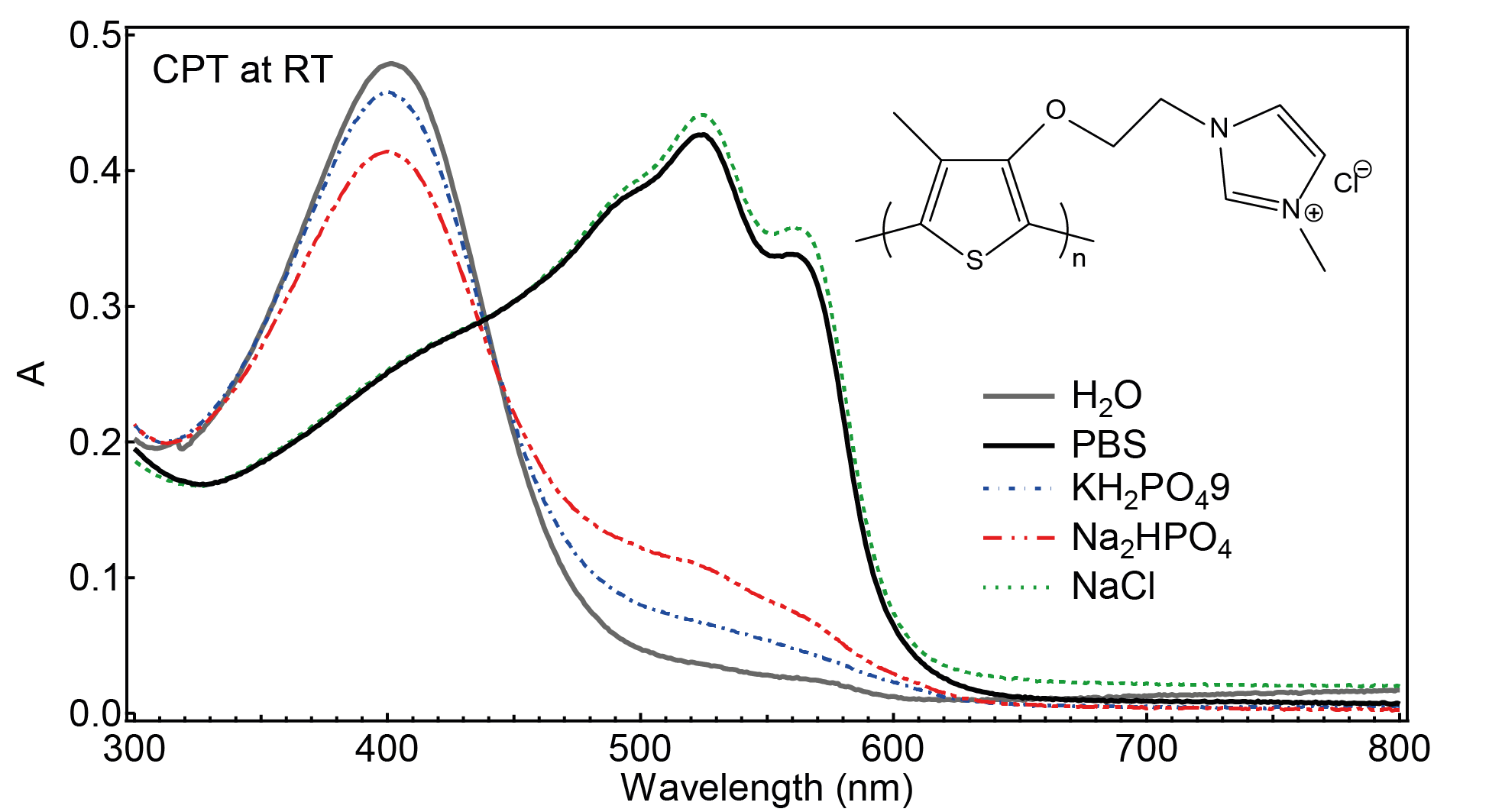Spectroscopic behavior of a water-soluble conjugated polyelectrolyte in biological environment
Here we present a spectroscopic study of a conjugated polyelectrolyte, which consists in a polythiophene derivative with cationic side chains that has been used as a biological sensor1. This work is an effort to understand the changes of photophysical properties of polyelectrolytes, depending on their conformation, which is usually linked also to the biosensing mechanism. In pure water, the polymer adopts a random-coil conformation at room temperature. On the other hand, when dissolved in an aqueous biological environment (phosphate buffered saline, PBS), the polymer chains are ordering due to the favorable interactions with the buffer ions. These different degrees of ordering in the polymer lead to color changes of the solution, with an important red-shift in the absorption spectrum in PBS. Additionally, the ratio of ordered to random-coiled polymer chains in PBS can be varied by tuning the temperature. Using resonance Raman spectroscopy combined with density functional calculations, it was shown that the ordering is linked to planarization of the polymer backbone. The excited-state behavior of the polymer in different conformations was investigated with femtosecond transient absorption spectroscopy. In the random-coil conformations, triplet state formation occurs, while in the ordered chains, a small fraction of polarons is formed, probably favored by interchain interactions.

[1] H. A. Ho, M. Boissinot, M. G. Bergeron, G. Corbeil, K. Dore, D. Boudreau, M. Leclerc, Angew. Chem. Int. Ed. 2002, 41, 1548-1551.